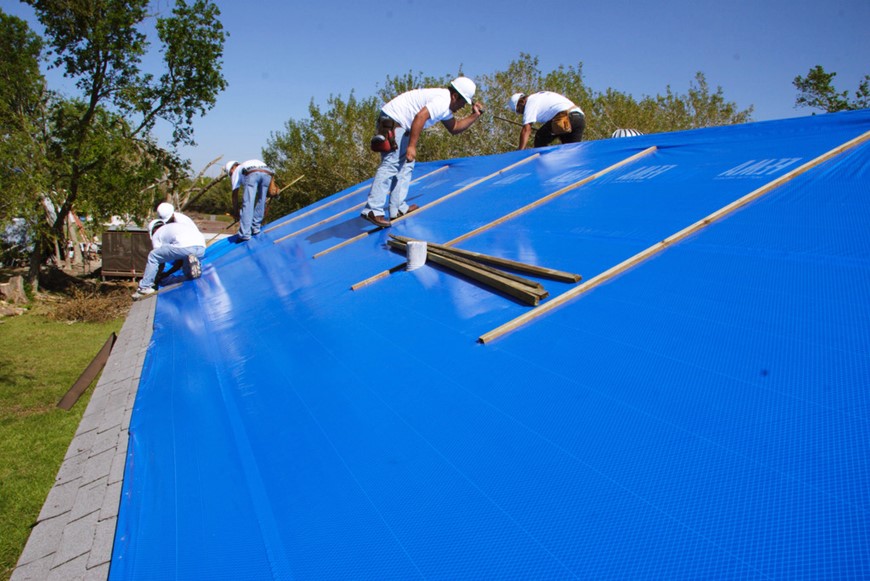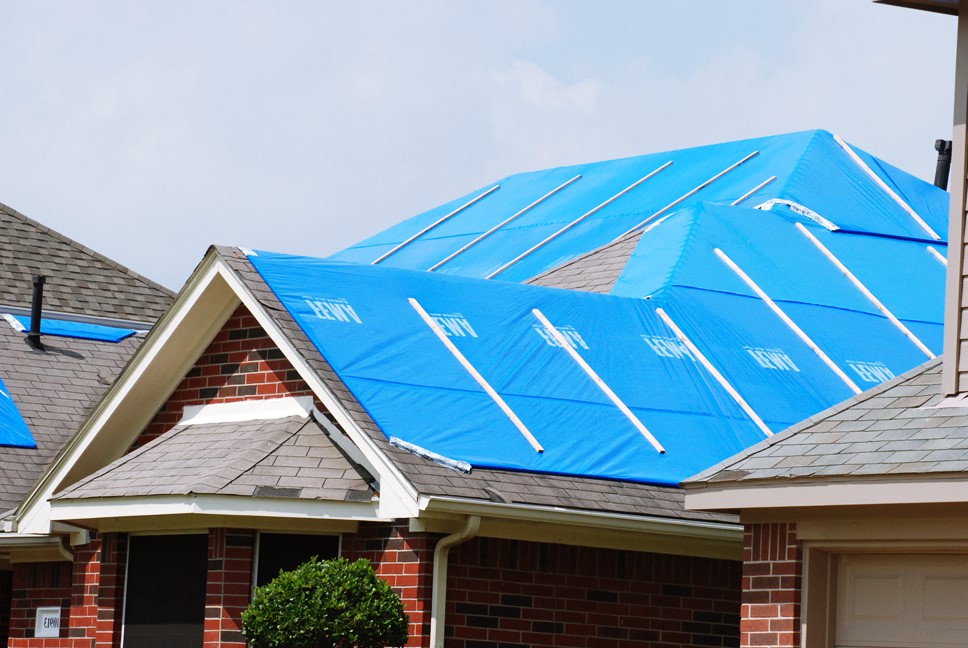If you’re a homeowner, then you know that there are a lot of things that you have to take care of. One of those things is your roof. And while you might not think about it often, there will come a time when you need to know how to tarp a roof.
Whether it’s because of storm damage or some other problem, there are a number of situations in which you might need to put a tarp on your roof. And while it might seem like a simple enough task, there are a few things that you need to know before you get started.
In this article, we’re going to take you through everything you need to know about how to tarp a roof. We’ll discuss the different types of tarps, how to prepare your roof, and how to properly secure the tarp. By the end, you’ll know everything there is to know about this important task.
Table of Contents
Why is it important to tarp a roof?
There are a few reasons why it’s important to tarp a roof. The first reason is to prevent further damage to the roof. A tarp will protect the roof from weather damage like wind, rain, and snow. This is important because the weather can cause even more damage to a already damaged roof.
The second reason is to protect your home from water damage. If your roof is damaged, water can enter your home and cause a lot of damage. By tarping the roof, you can prevent water from entering your home and causing expensive damage.
The third reason is to protect yourself and your family. If your roof is damaged, it can be dangerous to be in your home. Tarping the roof will help to protect you and your family from injury.
There are many reasons why it’s important.
What are some things you need to know before you start?
If you’ve never started a company before, there are a few things you should know before you get started. Here are a few tips to help you get started on the right foot:
- First, you need to have a great business idea. This is the foundation of your company and what will make it successful.
- Next, you need to assemble a team of talented individuals who can help you turn your idea into a reality.
- Once you have a team in place, you need to start raising money to fund your company. You’ll need to convince investors that your company is worth investing in.
- Finally, you need to actually start your business. This involves putting all the pieces together and making your company operational.
Starting a company is a daunting task, but if you have a great idea and the right.

How do you tarp a roof?
If you’re in the process of repairing or replacing your roof, you may be wondering how to tarp a roof. Tarps are a common sight on construction sites, but they can also be used to protect your roof from weather damage. In this article, we’ll give you a step-by-step guide on how to tarp a roof so you can keep your home or business safe from the elements.
So, let’s get started. First, you’ll need to purchase a tarp that is big enough to cover your entire roof. You can find tarps at most home improvement stores. Once you have your tarp, you’ll need to lay it out on the ground so you can position it over your roof. Once you have the tarp in place, you’ll need to secure it to your roof. You can do this
What are some common mistakes people make when tarping a roof?
One of the most common mistakes people make when tarping a roof is not properly securing the tarp. If the tarp is not properly secured, it can easily blow off in high winds, leaving the roof exposed. Another common mistake is not using the proper size tarp. If the tarp is too small, it will not cover the entire roof, leaving parts of the roof exposed to the elements. Finally, people often forget to remove the tarp when the job is finished, which can lead to mold and mildew growth on the roof.
How can you avoid making these mistakes?
There are many mistakes that can be made when starting a company podcast. Here are four mistakes to avoid when starting your podcast:
- Not having a clear purpose or goal for your podcast. Ask yourself why you are starting a podcast and what you hope to achieve with it. Without a clear purpose, it will be difficult to create content that is engaging and interesting to your listeners.
- Not doing your research. Before you start recording, take some time to research the topic you will be discussing. This will help you sound more informed and avoid saying anything that could potentially damage your company’s reputation.
- Not investing in quality equipment. Investing in quality equipment will help your podcast sound professional and avoid any technical issues that could occur during recording or playback.
- Not editing your podcast. Once you’ve recorded your podcast.
To wrap things up
As we come to the end of this article, let’s briefly recap everything we’ve covered. In this article, we’ve looked at what you need to start a company podcast. We’ve looked at the basics of setting up your equipment and ensuring you have a good quality recording. We’ve also looked at how to edit your podcast and how to find a good hosting platform.
Starting a company podcast is a great way to get your company’s voice out there and to connect with your customers. With a little planning and effort, you can create a successful podcast that will help your business in many different ways.

I come from an extensive family of construction professionals and have been around it most of my life. Early in my home renovation career, I remodeled several homes as well as built custom homes and additions.
Although this was a great experience, I decided to specialize in roofing and gutter systems because I enjoy interacting with customers and seeing their satisfaction when the job is done.

